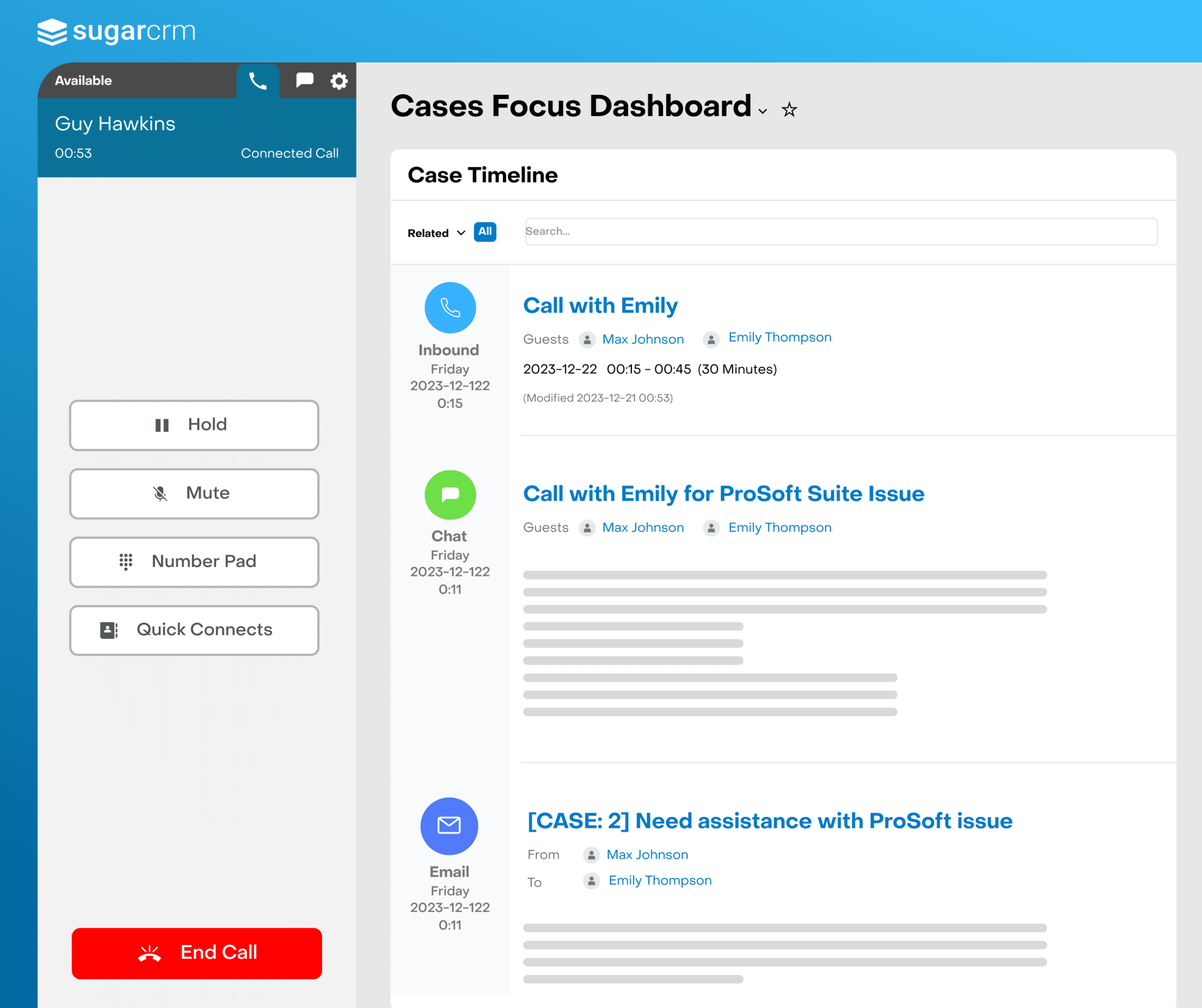From One IT Buyer to Another: Tips for Companies Switching CRMs
Customer Relationship Management (CRM) is a business-critical software that powers companies worldwide. From supporting high-tech manufacturing companies process orders to empowering field sales for an up-and-coming services company, CRM makes the world go round. But whether you’re scaling faster than your technology can keep up, lacking key integrations into other tools, or struggling with an uninspired use of CRM, you may find yourself asking the hard question—Is your CRM still serving your needs?
Every day, companies of varying sizes and industries decide to switch their CRM. In fact, the average customer churn rate for CRM providers is 32% globally, with a whopping 47% in the US alone. Whatever the reason may be for your company to switch providers, it’s best to remember to put your and your customer’s needs first. The fact of the matter is, as you grow and scale as a company, so should the capabilities of your CRM platform.
“Changing technology can be scary, but what’s even scarier is being with a technology that is not meeting your business needs.” – Sr. IT Director, Manufacturing Industry
Modern businesses depend on technology for virtually all aspects of their operations. If your technology isn’t functioning correctly, your employees cannot do their jobs properly. That’s where asking the tough questions comes into play. If your current CRM platform isn’t running at peak performance or allowing your workforce to operate efficiently, it’s time to move on.
In this customer’s case, this was the exact catalyst that had leadership within their company turning a keen eye to a decades-long partnership to assess if their CRM was still serving her company’s needs. During this migration, they were able to not only switch providers with minimal disruption but also see lasting and resilient success post-implementation.
Below are four expert tips you can implement in your process as you begin to migrate to your new CRM platform.
4 Tips from an IT Expert on How to Switch CRMs with Minimal Disruption
Tip #1: Prioritize Scalability
QUOTE: “As we went through the evolutionary process with the CRM, we found ourselves in a state last year where we started to identify that we had a gap in what a CRM system needed to do for us today and into the future to match what our scalability plans were.” – Sr. IT Director, Manufacturing Industry
Think big. Look for a CRM platform that you can see your company growing into. When choosing your new partner, there are many factors you should consider—a major one being scalability. You need a system to be able to meet both current CRM needs as well as future ones.
When switching to a new platform, especially in the current economic landscape, it’s essential to look for flexible and resilient tools to navigate volatile market conditions. Prioritizing it from the start can lead to lower maintenance costs, better user experience, and higher agility.
Tip #2: Money Talks—Consider Total Cost of Ownership (TCO) when Choosing a CRM
QUOTE: Changing technology may come with some short pain, but what’s that offset? You’re putting employees into something that’s better, that’s meeting their needs, and will continuously meet their needs. Why would you say no? Especially if the price matches.” – Sr. IT Director, Manufacturing Industry
We won’t sugarcoat this: cost matters when it comes to switching CRM providers. This is why companies should seek vendors that offer top-of-the-line functionality and competitive market pricing.
Organizations switching CRMs should consider the project’s full cost when looking at new software. In fact, according to Technology Advice, without TCO analysis, the software can surprisingly cost a business upwards of 5-8x the original purchase price. This difference in expenses can significantly affect a business, its ROI, and overall success. Not taking TCO into account when looking at systems like CRM and marketing automation can lead to a lot of unwanted surprises down the road.
Tip # 3: Look For a Partner, Not a Vendor
QUOTE: “Step back and look at the business and the partnership—what do you need a tool to do for you” – Sr. IT Director, Manufacturing Industry
Migrating to a new platform may seem complicated or too time-intensive, but partnering with the right vendor can make your journey painless. The first step is understanding who you are as an organization. You want to look for a vendor that will not only help you along the way but also know when to take a step back from OOTB functions and let you take control of how you want to customize and personalize your functions.
You need a partner who will not only show up and be there for your organization during the implementation process but will also give you ongoing support after the heavy lifting is done.
When you start re-evaluating your business processes during the transition process, it’s a good opportunity to lean on a trusted partner. This can help you to be flexible with your project scope and seek advice from your new partner to learn new ways of doing things and different aspects of the new software you didn’t already know.
Tip #4: Get People Onboard With Change—Flatten the Technology Adoption Curve
QUOTE: “Remember who your audience of that application is going to be and really assess what their appetite is to digest new technology. It’s important to understand your culture relative to the adoption of new technologies and just try to address that as early on as you can to help keep the positive momentum moving forward.” – Sr. IT Director, Manufacturing Industry
Your company’s people, processes, and technology are three of the most critical components of any successful transformation. While it’s easy to hyper-focus on the new technology, your investment will fall short or even fail entirely if you don’t prioritize helping your people through the technology and process changes.
Your employees are the people who, day-in and day-out, will be living in your new CRM—prioritize their input. This starts by investigating your current business needs and seeing if your CRM is still working for you, even if your company tends to be more risk-averse or has executive buy-in on your current solution.
Adapting to new ways of working can be complicated—everyone approaches change differently. That’s why it’s important to have a plan in place that sets your people up for success while minimizing the challenges and disruptions that inherently come with a CRM switch.
Choose the CRM Option That Aligns With Your Needs
Switching CRM providers is no walk in the park—even when you know you’ve clearly outgrown your current system. Regardless of the chosen provider, companies should remember who will use the solution daily. Serious time and energy should be dedicated to effective employee training programs. Doing so will increase the chances of a successful implementation, boost productivity, and increase employee satisfaction.
SugarCRM offers its customers the ability to keep track of their most critical customer interactions and information all in one central location. We can help you implement processes that are collaborative, automated, and data-informed to make sure everyone within the sales organization is able to work together with minimal disruption.
If you’re interested to learn more about how we can make your CRM transition as effortless as possible? Speak with a Sugar representative today to kickstart your transformation.


